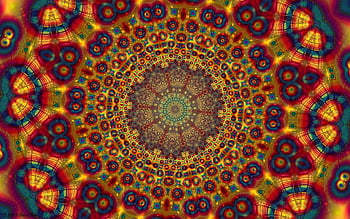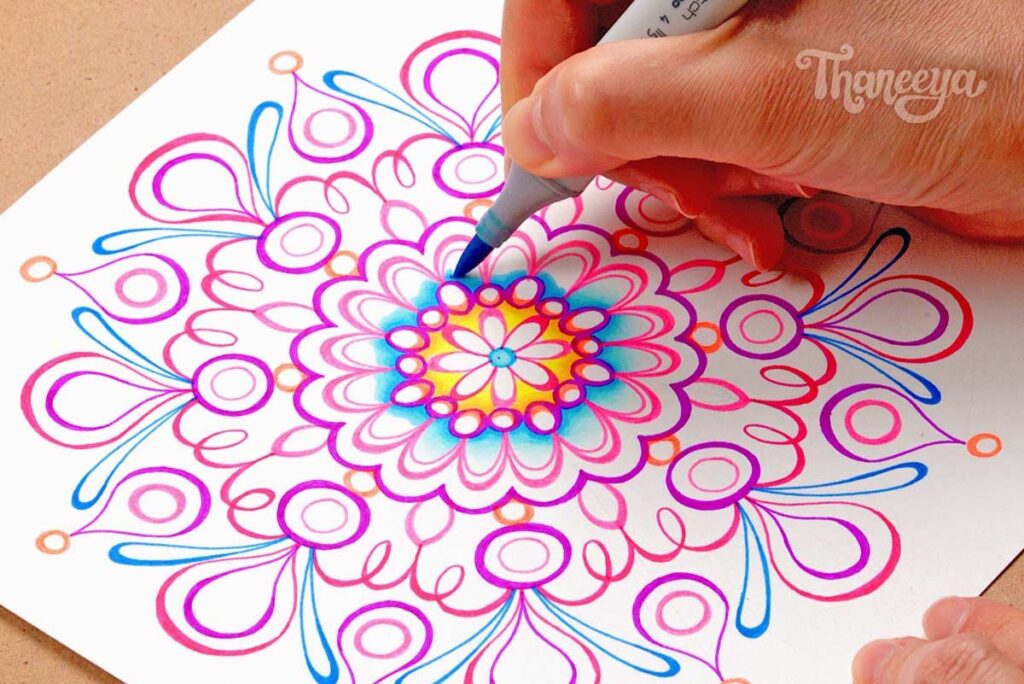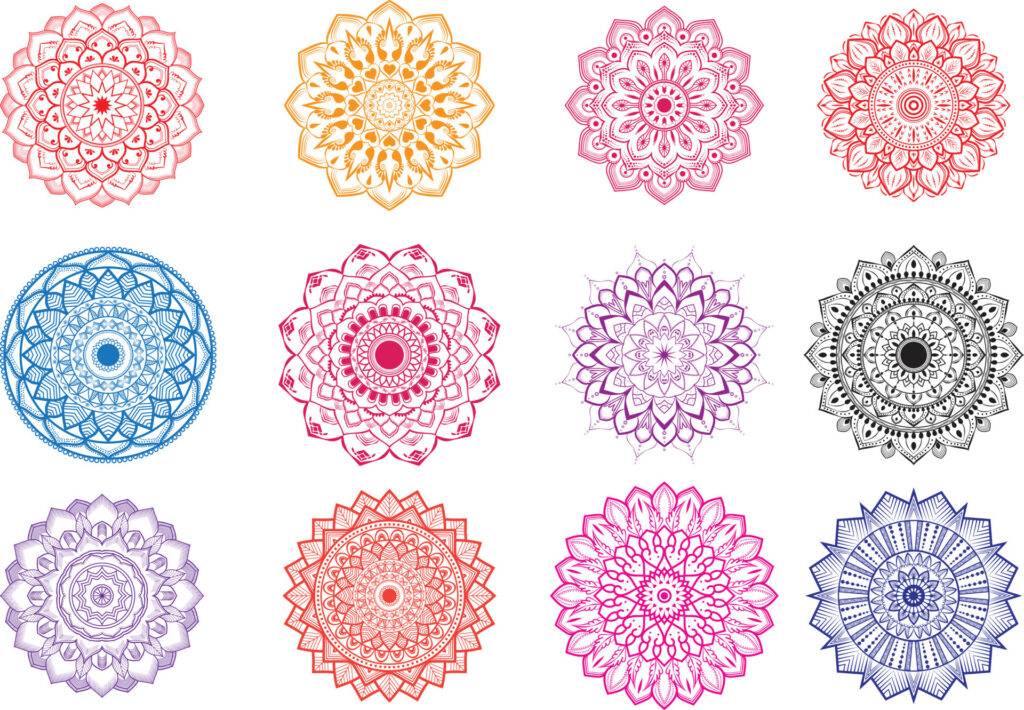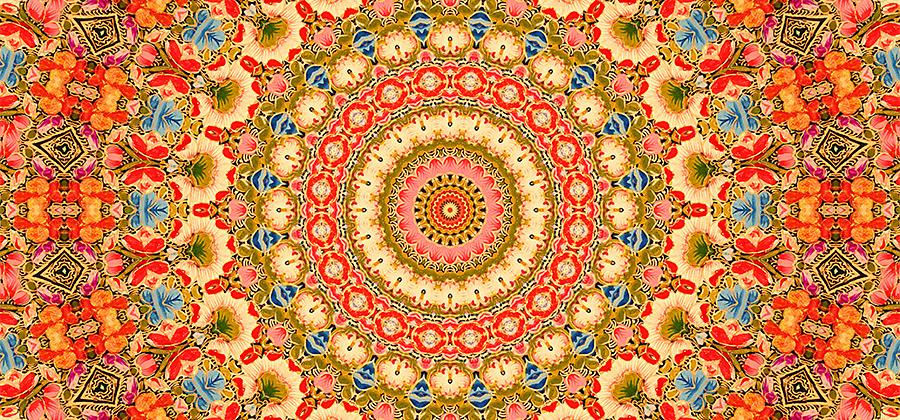Exploring the History and Meaning of Mandala Art

Mandala art is a form of spiritual and ritual symbolism that has been used for centuries in many cultures around the world. The word “mandala” is derived from the Sanskrit word for “circle” and is often used to refer to a circular design that is used as a spiritual and ritual symbol in Hinduism and Buddhism. Mandala art is believed to represent the universe and is used as a tool for meditation and contemplation.
Mandala art is often used in spiritual practices such as yoga and meditation. Mandalas can be used to help focus the mind and bring about inner peace. They can also be used to help create a sense of balance and harmony in one’s life. Mandalas can also be used to help create a sense of connection with the divine and to help bring about spiritual growth.
How to Create Your Own Mandala Art

Creating your own mandala art can be a rewarding and therapeutic experience. Mandala art is a form of art that has been used for centuries to represent the universe and its many aspects. It is a form of art that is often used for meditation and contemplation. In this article, we will discuss the steps necessary to create your own mandala art.
Once you have chosen a design, you will need to gather the materials necessary to create your mandala. You will need a piece of paper, a pencil, colored pencils, markers, and a ruler. You may also want to use a compass to help you draw circles.
The next step is to draw your mandala. Start by drawing a circle in the center of your paper. Then, draw a series of concentric circles around the center circle. You can use a ruler to help you draw the circles. Once you have drawn the circles, you can begin to add symbols or patterns to your mandala.
When you are finished drawing your mandala, you can begin to color it. You can use colored pencils, markers, or paint to color your mandala. You can also use glitter or other materials to add texture and dimension to your mandala.
Once you have finished coloring your mandala, you can hang it up in your home or office. You can also frame it and display it as a piece of art.
The Benefits of Coloring Mandalas

Mandalas are intricate circular designs that have been used for centuries in various cultures for meditation and spiritual healing. In recent years, coloring mandalas has become a popular form of art therapy, with many people finding it to be a calming and therapeutic activity. This article will discuss the benefits of coloring mandalas and how it can be used to promote mental and emotional wellbeing.
Coloring mandalas has been found to be a powerful form of stress relief. The repetitive nature of coloring the intricate designs can help to focus the mind and reduce anxiety. It can also be used to help people relax and enter a meditative state. The act of coloring can be calming and soothing, allowing the mind to become more focused and clear.
Coloring mandalas can also be used to promote self-expression. The act of coloring can be a form of self-expression, allowing the artist to explore their feelings and emotions. It can also be used to explore different aspects of the self, such as identity, values, and beliefs.
In conclusion, coloring mandalas can be a powerful form of art therapy, with many benefits for mental and emotional wellbeing. It can be used to reduce stress and anxiety, promote creativity, self-expression, and mindfulness. Therefore, it is an activity that can be beneficial for anyone looking to improve their mental and emotional wellbeing.
The Different Types of Mandalas

Mandalas are intricate, circular designs that have been used for centuries in various cultures for spiritual and ritual purposes. They are often associated with meditation and can be found in many forms, from intricate paintings to simple drawings. Mandalas can be used to represent a variety of concepts, from the physical world to the spiritual realm. In this article, we will explore the different types of mandalas and their meanings.
The most common type of mandala is the Tibetan mandala. This type of mandala is typically composed of a central deity surrounded by four directional gates, each of which is guarded by a protective deity. The central deity is often depicted as a Buddha or Bodhisattva, and the four directional gates represent the four elements: earth, water, fire, and air. The Tibetan mandala is often used as a tool for meditation and contemplation, as it is believed to help the practitioner focus on the spiritual aspects of life.
The third type of mandala is the Native American mandala. This type of mandala is often composed of a central deity surrounded by four directional gates, each of which is guarded by a protective deity. The central deity is often depicted as a Native American spirit or animal, and the four directional gates represent the four directions: east, west, north, and south. The Native American mandala is often used as a tool for meditation and contemplation, as it is believed to help the practitioner focus on the spiritual aspects of life.

